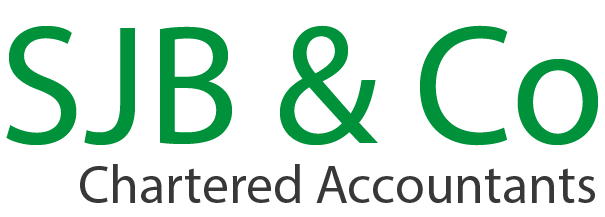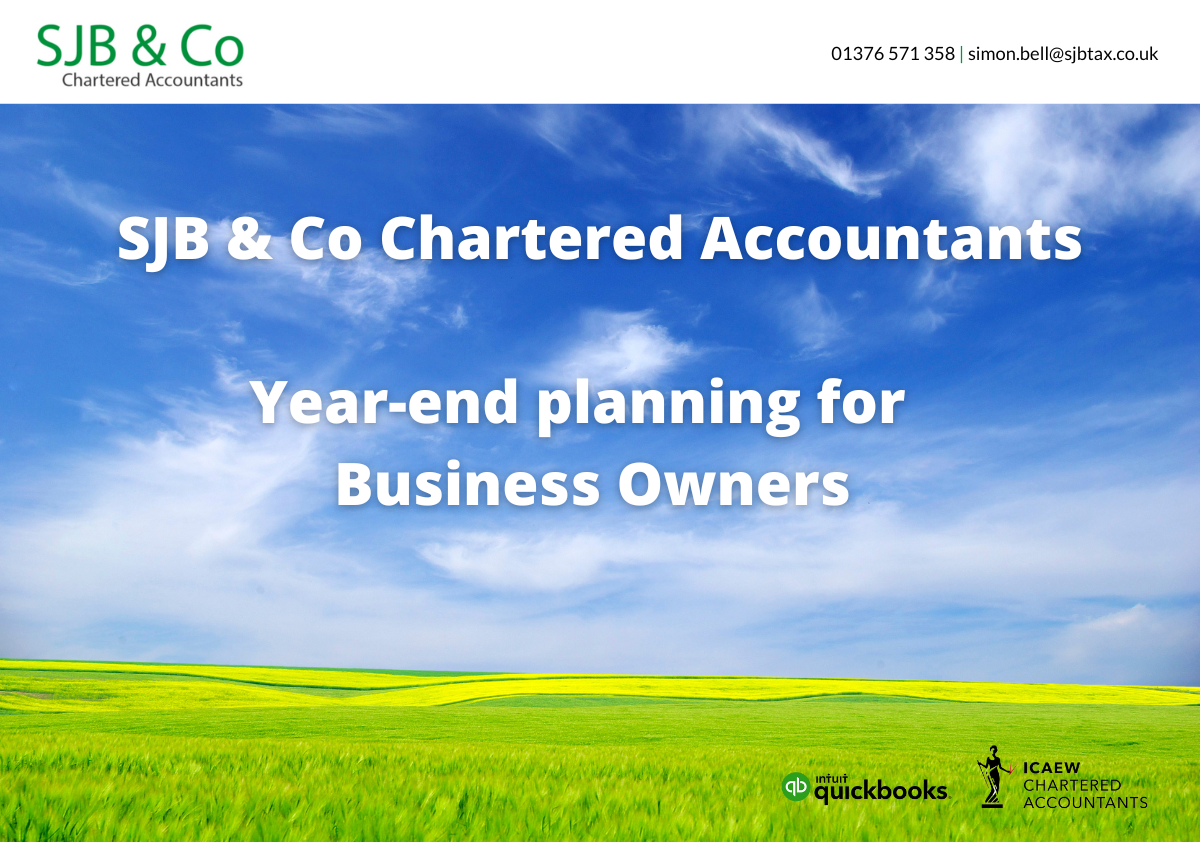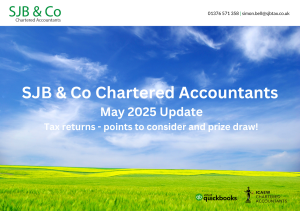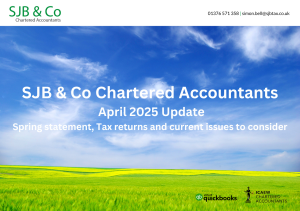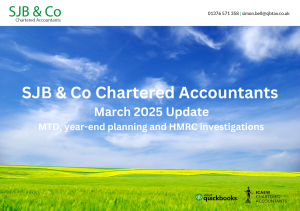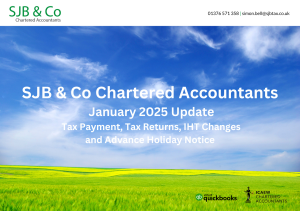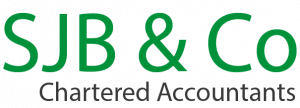Business Tax Review 2022-23
THE BASICS:
Whether you are self-employed or have your own company your periodic business tax payments will always be based on yearly trading profits and other chargeable gains made in the same period.
If you run your business through a company, corporation tax is payable on adjusted business profits (after allowances for capital purchases), nine months and one day after your year-end date. Accordingly, corporation tax for the accounting year to 31 March 2022, will be due for payment 1 January 2023.
As a quick fix, you could transfer between 15% and 20% of your monthly profits to a deposit account to reserve for this liability.
If you are self-employed, your business profits will form part of your self-assessment tax return. The amount of tax you will pay is split into two instalments on account, and a balancing adjustment if necessary.
To reserve cash for your self-assessment tax payments, the mathematics are more complex. Your best option is to deduct £1,000 per month (being your approximate income tax personal allowance) for each business partner, from the trading profits you make, and apply 20% to what is left. Transfer this amount to a deposit account. However, this will only provide the funds to pay tax on your business profits at the basic rate. If you have other taxable income this will need to be factored in.
PRE-YEAR-END TAX PLANNING:
If you have a good set of management accounts, for say the first three quarters of your trading year, and a realistic projection for the year, then you can sit back with your trusted tax advisor and consider your options.
Whatever your business structure tax due on business profits needs to be paid at some future date. Pre-year-end tax planning gives you adequate time to estimate your future liabilities and reserve funds to pay the bill…
The check lists that follow have been split into two: the first for self-employed business owners (sole traders or partners), and the second for limited companies and their directors. The suggestions will impact income tax, NIC and corporation tax payments.
Self-Employed Tax Review Check List 2022-23
- The income tax you will pay for 2022-23 will based on your profit or share of profits for the trading year ending in the 2022-23 tax year. However, you will have made two payments on account for 2022-23 (January and July 2023) based on your profits for the preceding year. Accordingly, if your profits are increasing you will likely have underpaid tax for 2022-23 and any balance owing will be payable 31 January 2024. If your profits are decreasing, you can elect to make smaller payment on account. Either way, having your estimated trading figures available, to forecast your 2023 tax payments, means you have ample time to request reductions in payments on account or save to meet any balance due January 2024.
- Every self-employed person is entitled to earn £12,570 during 2022-23 without paying income tax. If your projected profits (or share of profits), assessable in 2022-23, are lower than this amount your personal tax allowance (or part of the allowance) may be wasted. To avoid this, you can defer claims for capital allowances, or perhaps defer refurbishment or other non-recurring costs to increase your taxable profits, and fully utilize your personal tax allowance. These adjustments will tend to push tax relief on deferred expenditure into future years.
- If your share of profits looks as if it will breach one of the thresholds and push you into higher, marginal rates of tax (for example: loss of child benefit if income exceeds £50,000, loss of your personal allowance if your income exceeds £100,000, or reduction in the amount of pension relief you can claim if your income exceeds £240,000). To counter these risks, you could consider bringing forward capital investments, in plant, equipment or commercial vehicles and claim additional capital allowances.
- Self-employed farmers, who can experience significant variations in the level of profits achieved, should take advantage of the extended averaging rules that entitle them to average their profits over a five-year or two-year period for 2022-23.
- In planning for tax payments, based on profits assessable for 2022-23, business owners should be aware that generous tax allowances are still available for qualifying capital expenditure. The Annual Investment Allowance allows you to claim a 100% write off for expenditure up to a £1m limit. This is a useful adjustment device to reduce taxable profits and save tax, whilst maintaining published profits in your profit statement.
- Class 4 National Insurance is based on the level of business profits: 10.25% on profits between £11,909 and £50,270, and 3.25% on profits over £50,270. Any reductions you can achieve in your taxable business income will also reduce this significant NIC charge.
- Since 2016 the rules for the VAT Flat Rate Scheme changed. All users of this scheme should crunch the numbers to see if they qualify as a limited cost trader. If they do, a flat rate of 16.5% must be applied and this may preclude the advantages of registering for the scheme.
- Finally, readers should take a look at our check list for individuals’ subject to income tax, as all of the comments made will help self-employed persons reduce their tax liabilities.
And do not forget, you pay tax on the profits you make, not the drawings you take from your business!
Limited Company Tax Review Check List 2022-23
- Incorporated businesses are taxed at corporation tax rates, currently 19%, and any profits retained in the business will be subject to no additional tax charge. This final point illustrates one of the major advantages of running a profitable business inside a limited company structure. If you are self-employed you may want to consider the benefits of incorporating your business.
- From April 2023, two rates of corporation tax will apply. Smaller companies with profits up to £50,000 will continue to pay corporation tax at 19%. Companies with profits in excess of £50,000 will be subject to a 25% rate. Firms with profits between £50,000 and £250,000 will be able to claim marginal relief.
- The marginal rates reduction from April 2023 will be reduced if companies have associated businesses. Prior to April 2023 it is recommended that companies consider restructuring these associated businesses to avoid unnecessary increases in their corporation tax payments.
- Shareholders should review any plans in place to deal with succession, especially, smaller family businesses. This review should consider personal circumstances, changes in the company’s financial status, and changes in tax legislation.
- Shareholders should also review shareholder agreements to ensure they still reflect the intentions of signatories.
- If all the shareholders of a small company hold the same class of shares, say ordinary shares, dividends will be paid based on the percentage held. This can be inconvenient if directors want to split dividends in a different proportion to equalise tax liabilities. One way to achieve this result is to convert existing shares into a number of different classes, say “A”, “B” shares etc., and in this way shareholders can receive dividends in a more tax efficient manner.
- Review the active participation of director/shareholder family members. Is there an opportunity to employ a spouse or child; or provide taxable benefits?
- Directors who have overdrawn their loan accounts with the company should consider taking a dividend to clear the loan (if reserves are available) or otherwise repaying the loan within nine months of the trading year-end. In this way an additional (albeit temporary) 33.75% corporation tax charge can be avoided.
- Directors with semi-permanent deposits on loan to the company, may be advised to charge the company interest. Basic rate income taxpayers can receive up to £1,000 in interest tax free, higher rate taxpayers £500.
- The tax on-costs of running a company car fleet – class 1A National Insurance for instance – as well as the considerable tax implications for participating employees, may provide sufficient justification for a change in strategy. For example, could the company lend employees funds to buy their own cars and pay them a tax-free business mileage allowance to cover running costs?
- If projected profits forecast a temporary dip, or a loss in the short-term, could the company’s accounting period be extended to embrace the loss and average down the taxable profits for the preceding period?
- If projected profits are forecasting a downturn in profits, how will this affect director/shareholders’ remuneration in the coming months; will there be sufficient retained profits to maintain regular dividend payments?
- Be sure to consider the funding of corporation tax payments that will need to be made nine months and one day after the company’s accounting year-end date.
- Companies can still claim the 130% super-deduction for purchases of qualifying assets purchased before 31 March 2023. For example, an asset costing £10,000 will create a tax deduction of £13,000. At 19% tax relief, this is a tax saving of £2,470, reducing the after-tax cost to £7,530.
For more information or to discuss any issues raised above please contact Simon Bell by phone on 01376 571358 or email [email protected] . This article is written in general terms and therefore cannot be relied on to cover specific situations. Applications of the principles set out will depend on particular circumstances. It is recommended that you take professional advice before acting or refraining from acting on any of the above content.
